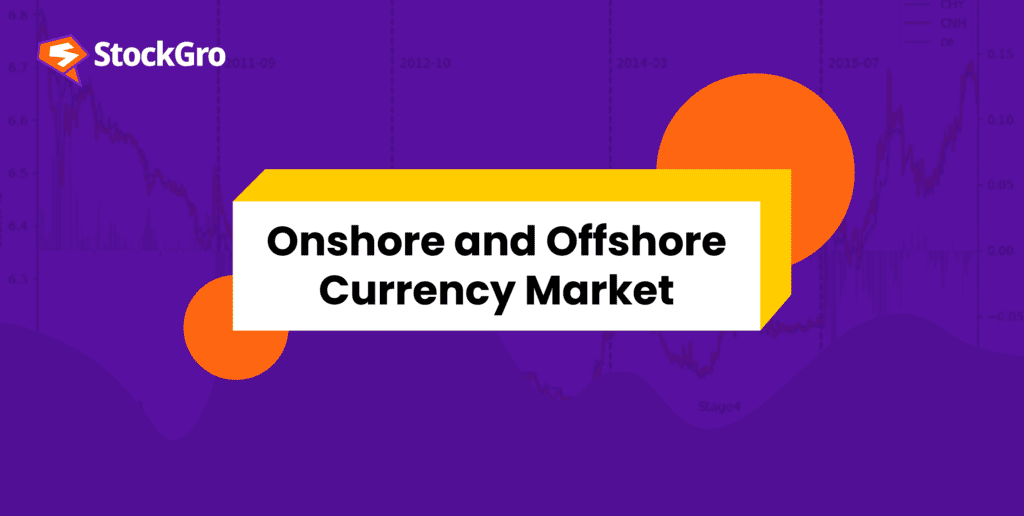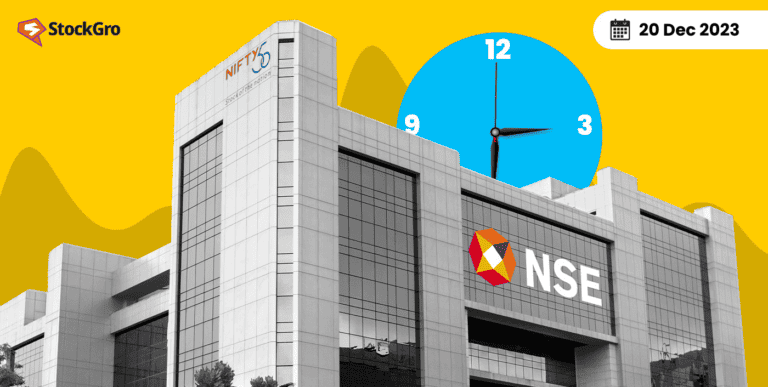
Investors with a sound knowledge of the financial world know how essential it is to maintain a diverse portfolio. Of all the tools and strategies available to mitigate the risks of investments, diverting funds into different avenues is a simple way of handling risks.
Investing in the currency market within and outside the country is one such option to diversify, which allows investors to get global exposure to investments.
In this article, we will discuss currency markets, their different types, the impact of these markets on investors and onshore and offshore market examples.
What is a currency market?
Also called the foreign exchange or forex market, the currency market is a place for traders to buy and sell currencies. Earlier, the currency market was primarily open to banks and financial institutions. But today, the market is accessible to retail investors, too and is the largest financial market in the world.
Onshore market
The local market, i.e., the forex market of the home country that allows trading in currencies, is called the onshore currency market.
For example, the onshore market for an Indian resident is the foreign exchange market in India. The Securities and Exchange Board of India (SEBI) and the Reserve Bank of India (RBI) regulate onshore currency trading in India.
You may also like: All you need to know about the basics of forex trading in India
Offshore market
Offshore currency market is the opposite of onshore markets. It refers to trading on international exchanges, i.e., the forex market of another country. Every country offers specific currency pairs to trade with. When traders want to trade international currencies unavailable in the local forex market, they resort to offshore currency trading.
The functioning of onshore and offshore markets
Currency trading takes place in pairs. For example, USD/INR is a currency pair. Here, USD is the base currency, and INR is the currency. It suggests how many units of INR are required to buy one unit of USD.
The Indian onshore currency market allows trading in 7 currency pairs:
USD/INR, GBP/INR, JPY/INR, GBP/INR, EUR/USD, GBP/USD and USD/JPY.
Traders use various derivative contracts like swaps, futures, options, forwards and spot contracts to trade currencies.
What if Indian traders want to trade in currencies not part of the above pairs? That is where the offshore forex market facilitates trading.
The primary difference between offshore and onshore trading is the national boundary.
An Indian resident who wants to exchange CHF (Swiss Francs) must trade in the offshore market since this currency is unavailable in the local forex market.
Also read: How does the US Fed’s interest rate pause impact global markets and India?
Investors look for options to trade in emerging market currencies to speculate and make profits. Emerging markets are those that are transitioning from developing economies to developed economies. Investing in such currencies helps in holding a diverse portfolio.
Non-deliverable derivative contracts are significant trading instruments in the offshore currency market. Some of the commonly traded derivative instruments are:
- Non-deliverable forwards: These are forward contracts in Over-the-counter (OTC) markets that do not deal with the actual exchange of currencies. They only involve exchanging cashflows on the basis of exchange rate fluctuations and differences on the settlement date.
For example, a trader enters into a non-deliverable forward contract in USD/CNY. He wants to sell CNY to buy USD. Assume that the agreed exchange rate is 7 with an expiration of 2 months.
On the date of expiration, if the exchange rate decreases to 6.5, it indicates that CNY has become slightly stronger than it was two months ago. So, the trader pays the difference to the trader buying CNY. If the exchange rate increases to 7, the trader selling USD pays the difference. - Non-deliverable options: This is another form of non-deliverable derivative contract where traders enter into options contracts to exchange cash flows based on the underlying currency. Like regular options contracts, the holder of the option has the option to execute or cancel the contract. However, the execution does not require an exchange of physical currencies but only cash settlement based on the difference in exchange rate on the expiry date.
- Non-deliverable swaps: These derivative contracts are used primarily for trading in restricted currencies. Restricted currencies are those which have restrictions on exchange. The North Korean Wong is an example of such currencies. Non-deliverable swaps allow the exchange of cash flows and settlement in a major currency like USD, instead of physically exchanging currencies since they are restricted.
Pros and cons of onshore markets
Benefits:
- Onshore markets deal with currencies recognised and allowed for trading within the country. Onshore currency trades positively impact the economy.
- The chance of fraudulent activities is low since onshore markets are strictly regulated by central authorities.
Drawbacks:
- While the regulation is beneficial in a way, it is also a limitation as the rules of trading are rigid.
- Trading in the onshore currency market involves high levels of documentation and tax obligations.
Also read: The world of currency fluctuations: How does it impact your investments?
Pros and cons of offshore markets
Benefits:
- Trading in offshore markets offers flexibility. Since there is no regulator in these markets, the rules are not stringent. The markets are available for trading 24*7.
- It allows traders to diversify their portfolios and get greater exposure to global markets.
Drawbacks:
- Since these markets are less regulated, they are prone to high levels of fraudulent activities.
- These markets are very liquid and volatile. While they can make high profits, the probability of loss is equally high.
Bottomline
Currency markets are highly liquid, and they trade in trade in large volumes every day. Onshore and offshore markets are different trading platforms that allow investors to exchange currencies locally and globally. Offshore trading is legal in India; however, increased offshore trading can affect the stability of the local currency.

